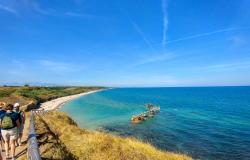Armed with medieval military accounts, papal documents, and ancient administrative records, historical seismologist Emanuela Guidoboni published the most comprehensive look ever at Abruzzo's earthquake history earlier this month.
During the last two thousand years, hundreds of earthquakes have struck Abruzzo, which contains the highest peak of the Appenine Mountains. The city of L'Aquila, in which 308 people died in an earthquake in 2009, is still recovering from the effects of its last seismic event.
Research by Guidoboni and her team at Italy's National Institute of Geophysics and Volcanology demonstrates that Abruzzo's active seismology has played an influential role in the region's political development. In December 1315, a massive earthquake in L'Aquila followed by weeks of tremors brought an end to a yearslong war.
Oral histories and archaeological records also reveal that many of the region's major cities, including L'Aquila, have been periodically abandoned due to earthquake damage.
Guidoboni's paper shows that a complete earthquake record for the region is impossible, due to a lack of records from the early and middle Medieval period. Her team is unable to accurately account for seismic activity between the 4th and 14th centuries in which spotty documentation of repairs to collapsed homes or civil infrastructure are often the only ambiguous clues of an earthquake's occurrence.









